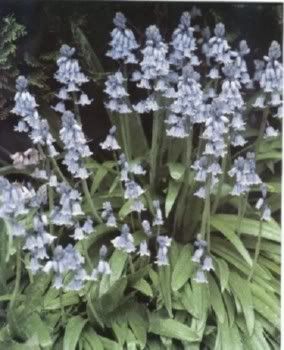

Bluebell (Campanula rotundifolia or Scilla nutans)
Folk Names: Auld Man’s Bell, Bats in the Belfry, Bellflower, Calverkeys, Culverkeys, Canterbury Bells, Chimney Bellflower, Coventry Bells, English Rampion, Harebell, Jacinth, Mariets, Mercury Violet, Our Lady's Nightcap, Our Lady's Thimble, Ring-o-Bells, Throatwort, Venus' Looking Glass, Viola Mariana, Wild Hyacinth; Sn Jacinth, Wood Bells
Description: Very long, narrow leaves surround a flower stem sporting pendulous, bell-shaped blossoms, arranged in a long curving line. Each flower has two small bracts at the base of a short stalk. The perianth is bluish-purple and composed of six leaflets. It flowers from early April to the end of May and is found year after year in the same spot. The grass-like leaves remain late into the Autumn.
Effects:
Planet: Mars, Saturn, Uranus
Element:
Associated Deities: Apollo, Zephyrus
Traditions:
Linneaus first named this plant Hyacinthus, associating it with Hyacinth, the flower of grief and mourning. Hyacinthus was a young man loved by both Apollo and Zephyrus, but Hyacinthus preferred the god of the Sun to the god of the West Wind. One day while Apollo and Hyacinthus were playing quoits (discus), Zephyrus took his revenge. He sent a wind to blow a quoit (a flattened ring of iron) off course to kill Hyacinthus. Grief-stricken, Apollo raised a purple flower from the blood of his beloved.
Magic:
Turn a bluebell inside-out without tearing it, and you will eventually have the one you love.
For luck, pick a bluebell and say:
Bluebell, Bluebell,
bring me some luck
before tomorrow night
Anyone who wears the flower will be compelled to tell the truth in all matters.
Tennyson said that the juice of bluebells would cure snakebite.
Known Combinations:
none noted
Medical Indications: Parts Used : The bulb is considered poisonous when fresh.
Though of little use in modern medicine, the dried bulb was applied as a diuretic and styptic.
Nutrition:
none
Mercantile Uses:
The viscid juice of the root was once employed as a bookbinder’s gum, and Gerard said that it was used for setting feathers in arrows.